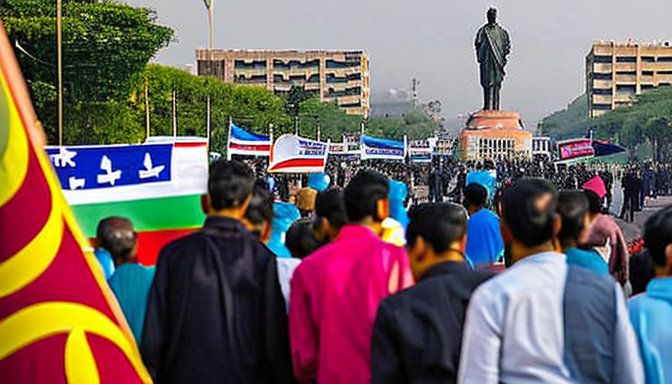Karachi, a city that pulses with life, has a history that is as vibrant as its streets. Once a humble fishing village, it has transformed into one of the largest metropolises in the world. But what led to this incredible change? Let’s take a stroll through time and uncover the events that shaped this bustling hub.
Starting in the early 19th century, Karachi was primarily known for its fishing and trade. Its strategic location along the Arabian Sea made it a prime spot for merchants. With the British colonization in the mid-1800s, the city began to see rapid development. New infrastructure like roads and railways emerged, turning Karachi into a vital trade route. Can you imagine the excitement? Ships docking, goods flowing in and out; it was the beginning of something big!
Fast forward to the post-independence era in 1947. Karachi became the capital of Pakistan, attracting people from all over the country. This migration brought diverse cultures, languages, and traditions, enriching the city’s identity. However, it also led to challenges. The population boom strained resources. Housing shortages became common. The city was evolving, but at what cost?
By the 1980s, Karachi was a melting pot of political movements. Groups emerged, advocating for rights and representation. The fight for social justice became a significant part of Karachi’s narrative. Each protest, each rally, added layers to the city’s character. People were no longer just residents; they were activists, demanding change.
Today, Karachi stands as a testament to resilience. The events of the past have left an indelible mark, shaping its culture and identity. The story of Karachi is not just about buildings and roads; it’s about the people, their struggles, and their triumphs. It’s a city that continues to evolve, reminding us that every event, no matter how small, contributes to the larger tapestry of history.
The Rise of Karachi as a Metropolis
Karachi’s journey from a humble fishing village to a bustling metropolis is nothing short of fascinating. In the early 18th century, it was merely a collection of huts along the coast. But, as the winds of change began to blow, Karachi transformed dramatically. The British East India Company arrived in the 19th century, and suddenly, Karachi was on the map. Trade flourished, and with it, the population surged.
By the late 1800s, Karachi was declared a port city. This was a game-changer. Goods flowed in and out, and people from all walks of life flocked to the city, seeking opportunities. Imagine the hustle and bustle! Streets filled with traders, laborers, and families. The city was alive!
As the 20th century approached, Karachi continued to grow. The construction of railways linked it to other regions, further boosting trade. Factories sprang up, and the city became a hub for manufacturing. It was a melting pot of cultures, with diverse communities contributing to its vibrant identity.
Fast forward to the post-independence era, and Karachi was now the capital of Pakistan. The influx of refugees added to its complexity. The city was no longer just a port; it was a symbol of hope and resilience. Today, Karachi stands tall as Pakistan’s largest city, a testament to its rich history and the spirit of its people.
The political landscape of Karachi has been shaped by numerous movements that echo the voices of its people. Starting in the early 20th century, the struggle for rights and representation became a crucial part of the city’s identity. Imagine a vibrant city where every corner buzzes with conversations about justice and equality. That’s Karachi for you! One significant movement was the Pakistan Movement in the 1940s. This was not just a political campaign; it was a dream for many. People gathered, rallied, and fought for a separate nation. Karachi, being a major port city, became a focal point for this struggle. The passion was palpable. The streets were alive with hope and determination. This movement laid the groundwork for Karachi’s future as the capital of Sindh province. Fast forward to the 1980s, and we see the rise of the MQM (Muttahida Qaumi Movement). This party emerged from the need for representation of the Urdu-speaking population. They voiced the concerns of the marginalized, demanding equal rights and opportunities. The impact was profound. Karachi’s socio-political fabric began to change, reflecting the city’s diverse demographics. Today, Karachi stands as a testament to these movements. The struggles for rights, representation, and justice continue to shape its identity. The people of Karachi are resilient. They carry forward the legacy of those who fought before them, ensuring that every voice matters. As we look back, we realize that these movements are not just history; they are the heartbeat of the city. Karachi’s identity has been shaped by numerous historical events, including its transformation from a small fishing village to a bustling metropolis, the impact of colonial rule, and various political movements that have fought for the rights and representation of its diverse populations. The evolution of Karachi into a major urban center can be attributed to key developments in trade and industry, as well as a rapid increase in population due to migration from rural areas and other regions. This growth spurred infrastructure development and transformed the city’s socio-economic landscape. Political movements in Karachi have played a crucial role in advocating for social change and governance. These movements have addressed issues such as civil rights, representation, and the socio-political challenges faced by the city’s diverse communities, significantly influencing its governance and societal norms. The culture of Karachi is a vibrant tapestry woven from its historical events, migrations, and the blending of various ethnicities. This rich cultural heritage is reflected in the city’s art, cuisine, festivals, and daily life, making it a unique urban experience.
Frequently Asked Questions